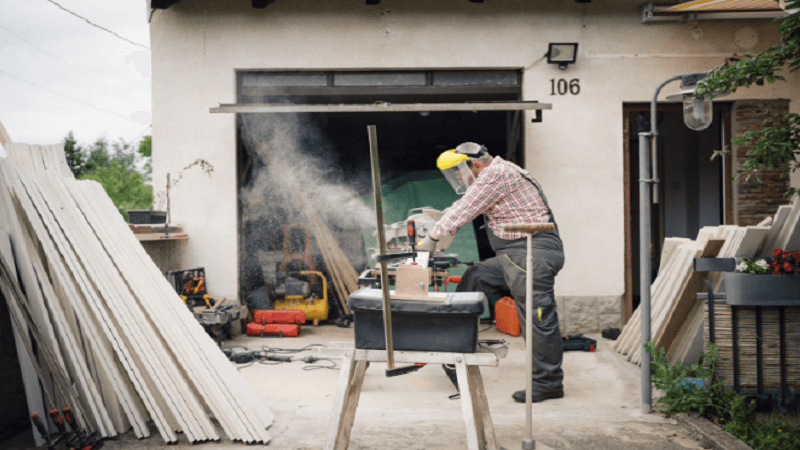Upgrading for energy efficiency during an exterior renovation is a smart, long-term investment. By incorporating high-performance cladding, ventilated rainscreen systems, and advanced wall assembly techniques, homeowners and property managers can significantly lower heating and cooling costs, enhance indoor comfort, and extend the life of their buildings. Partnering with an experienced exterior renovation contractor ensures these upgrades are installed correctly – especially critical for multi-unit properties, where uniformity, code compliance, and system integrity are essential.
Few home upgrades deliver both visual impact and long-term savings like a well-planned exterior refresh. Whether you’re updating a single-family house or managing a multi-unit property, the cladding phase is your best opportunity to lock in decades of energy savings, improved comfort, and stronger weather resilience – especially in Canada’s demanding climate.
This is especially true when you collaborate with Calgary siding experts – who understand how modern materials and techniques integrate with the building envelope. In the sections ahead, we’ll break down exactly how to align aesthetic upgrades with performance-driven choices, so your renovation does more than just look good.
High-Impact Strategies for Energy-Smart Walls
When your exterior siding is being replaced or installed for the first time, you’re not just choosing a finish – you’re shaping the thermal and moisture performance of your entire building. The right decisions at this stage can slash energy bills, improve occupant comfort, and extend the life of your structure.
Choosing High-Performance Exterior Materials
Not all wall finishes offer the same thermal benefits. Look beyond looks:
- Fibre cement offers excellent durability and moderate insulating value, especially when paired with rigid foam backing.
- Vinyl siding with insulated backing can improve R-value by up to 2–3 points compared to standard vinyl.
- Engineered wood composites often include thermal breaks and are compatible with continuous insulation systems.
Avoid materials that conduct heat readily (like thin metal without insulation) unless they’re part of a carefully engineered rainscreen assembly. Always consider the full wall system – not just the cladding – when evaluating performance.
Installing Rainscreen Siding for Moisture and Thermal Control
A rainscreen system – featuring a small air gap between cladding and the weather barrier – is one of the most effective upgrades for Canadian buildings. It delivers two key benefits:
- Drainage: It channels water away from the structural wall, reducing the risk of rot and mould.
- Ventilation: Airflow through the cavity helps dry out incidental moisture and minimizes thermal bridging.
In cold climates, this gap also minimizes thermal bridging, potentially boosting overall wall performance by up to 20%.
Sealing and Insulating the Building Envelope
This is where the real energy savings happen. During work, you should:
- Install continuous exterior insulation (like rigid mineral wool or EPS foam) over sheathing to eliminate thermal bridges at studs.
- Apply a high-quality air barrier (e.g., fluid-applied membranes or taped sheathing) to reduce uncontrolled air leakage.
- Seal all penetrations (windows, vents, utility lines) with durable, flexible tapes or sealants rated for exterior exposure.
The table below compares common insulation approaches during exterior renovations:
| Approach | R-Value Gain | Moisture Risk | Best For |
| Cavity insulation only | R-13 to R-20 | Moderate | Minor retrofits, budget jobs |
| Continuous exterior insulation | R-20 to R-30+ | Low (if detailed properly) | New builds, deep energy retrofits |
| Hybrid (cavity + exterior) | R-30+ | Very low | Multi-family siding, cold climates |
By layering these elements during your cladding project, you turn your walls into a high-performance shield – not just a cover.
Special Considerations for Multi-Family Siding Projects

Multi-family buildings – ranging from duplexes to mid-rise apartment complexes – demand a more coordinated approach to exterior renovations than single-family homes. The scale, regulatory requirements, and shared building systems introduce unique factors that directly impact how building envelope upgrades are planned and executed. When combined with energy efficiency goals, these considerations make early planning and expert coordination essential.
Code Compliance and Material Selection
Larger residential buildings often face tighter rules – especially for:
- Fibre cement and metal panels are commonly used for their fire resistance
- Mineral wool insulation is preferred over some foam types due to its non-combustible properties
- Rainscreen siding systems must be detailed to meet both thermal and fire separation requirements
Selecting materials that meet code while supporting energy goals – such as pairing fire-rated cladding with continuous insulation – ensures compliance without sacrificing efficiency.
Coordination Across Units and Trades
Unlike single-home projects, multi-unit renovations involve overlapping scopes: windows, balconies, mechanical systems, and cladding must all integrate seamlessly. Key coordination points:
- Aligning window flashing details with the rainscreen cavity
- Sealing utility penetrations consistently across all units
- Scheduling insulation and air barrier installation before cladding begins
An experienced contractor familiar with larger-scale retrofits can manage these interdependencies and protect envelope integrity.
Long-Term Maintenance and Uniformity
Aesthetic consistency isn’t just about curb appeal – it affects performance. Mismatched siding materials or installation methods can create thermal bridges or moisture traps at transition zones between units. Additionally, durable, low-maintenance cladding reduces future repair costs and tenant disruption.
For property managers, systems that support modular replacement – such as panelized rainscreen siding – are especially valuable. They allow localized repairs without affecting adjacent sections, preserving both appearance and envelope performance over time.
By addressing these factors early, multi-family projects can achieve the same energy gains as single-family upgrades – while meeting the added demands of scale, safety, and sustainability.
Pro Tips for Lasting Performance
Your renovation’s success isn’t just about what you install – it’s about how it all works together over time.
- Prioritize Air Sealing Over Extra Insulation
Adding more insulation won’t help if air is leaking through gaps around windows, outlets, or sheathing seams. Use blower door testing (if budget allows) or thermal imaging to identify and seal leaks before finalizing the envelope. - Choose Siding with Integrated Drainage Planes
Some modern exterior systems come with built-in drainage mats or furring strips that simplify rainscreen installation. These reduce labour costs and minimize installation errors – key for both single and multi-family siding projects. - Maintain Ventilation Balance
A tighter building envelope means you’ll need controlled ventilation. Pair your upgrades with an energy recovery ventilator (ERV) to maintain indoor air quality without losing conditioned air. - Document Your Upgrades
Keep records of insulation types, R-values, air barrier products, and installation details. This information is invaluable for future renovations, energy audits, or even property resale. - Monitor Energy Use Post-Renovation
Compare utility bills from before and after the project. A well-executed building envelope upgrade should yield a 15–30% reduction in heating demand in Canadian climates – especially when rainscreen siding and continuous insulation are used together.
Remember, energy efficiency isn’t a one-time fix – it’s a system. Every layer, from the weather-resistant barrier to the finish, must work in concert. The best results come not from the most expensive material, but from thoughtful integration and quality installation.
Wrapping Up: Efficiency That Lasts Beyond the Renovation
For homeowners and property managers alike, the key is to think beyond the surface. The most impactful upgrades happen behind the scenes: in the insulation layers, air seals, and drainage details that work silently to protect and perform. And while the upfront planning may require extra attention, the payoff – lower bills, fewer repairs, and enhanced indoor comfort – compounds over time.
After all, true value isn’t just in how your home looks today, but in how well it performs tomorrow. And that starts with smart choices made during your next project – choices that echo through every season, year after year.

